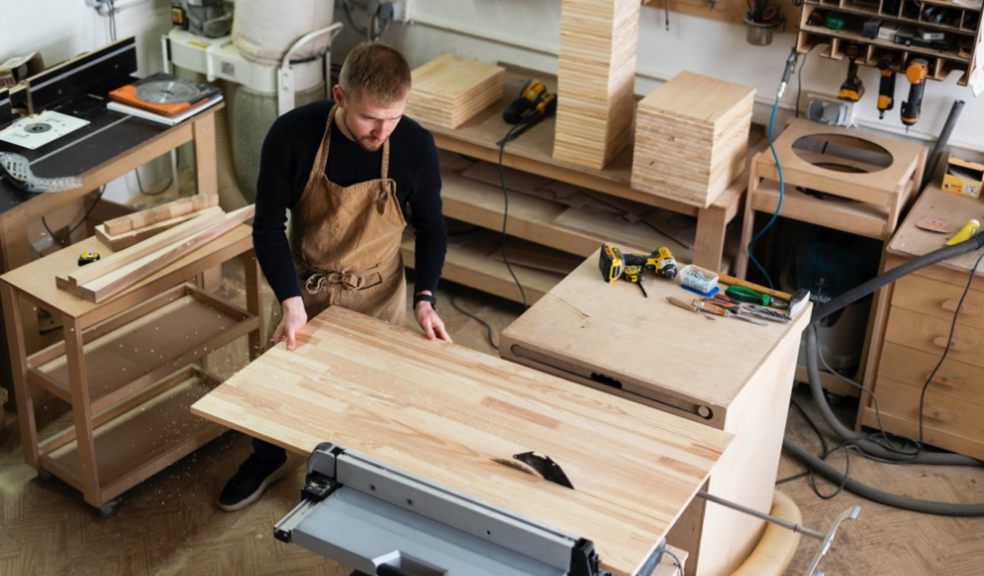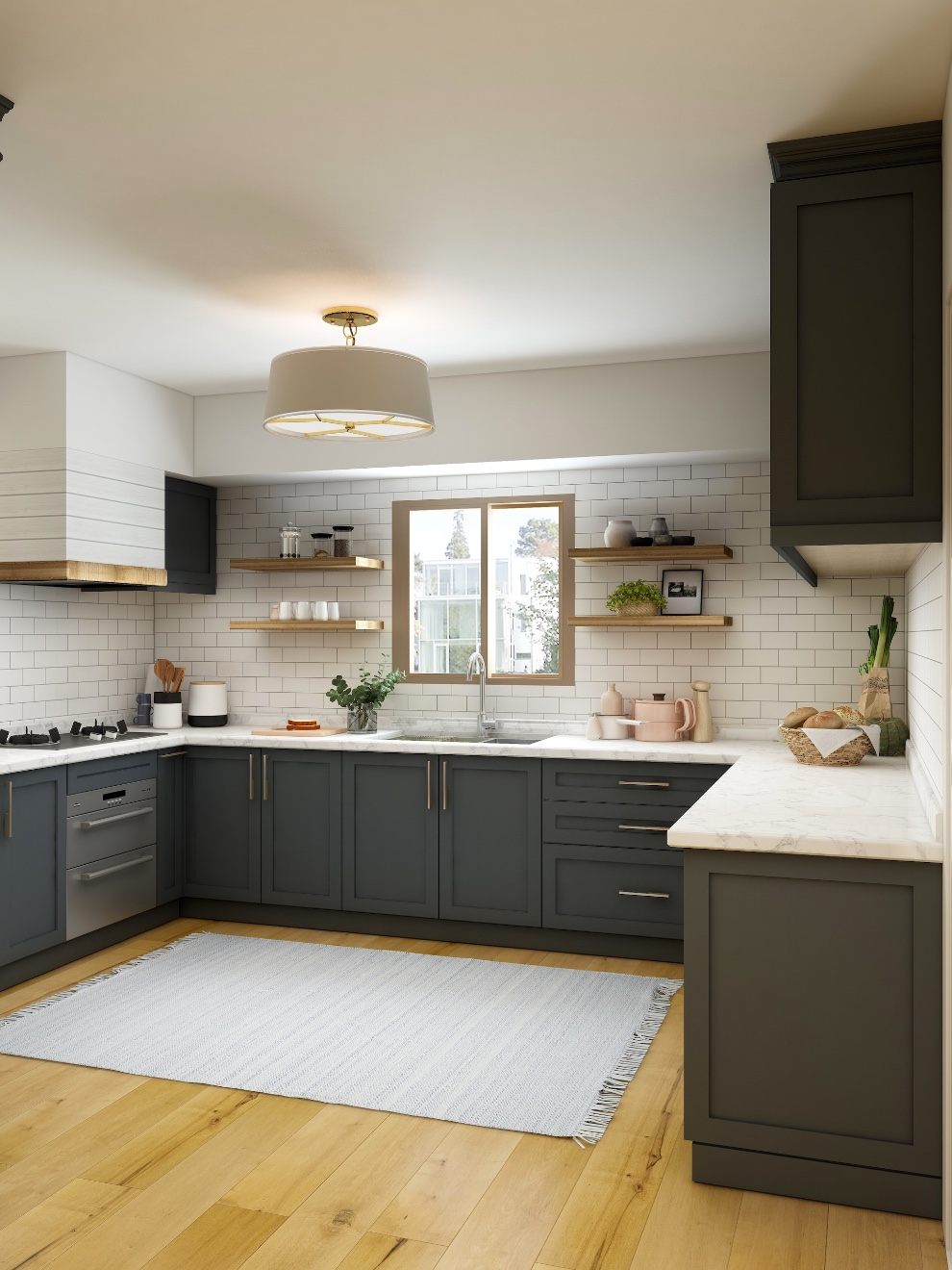
Guide to Effectively Joining Kitchen Worktops
Joining kitchen worktops with various materials, such as wood or laminate, is possible using these instructions for an effortless yet sturdy joint.
If you're planning a kitchen renovation or simply want to update your kitchen worktops, joining them effectively is a crucial step in achieving a seamless and charming look.
However, joining kitchen worktops can be a daunting task, especially if you're not familiar with the process.
In this guide, we'll provide you with the essential tips and techniques to help you join your kitchen worktops with ease and precision. Whether you're a DIY enthusiast or a professional, this guide is your go-to resource for achieving a flawless finish.

Measure and Cut
No matter the material of your worktop (laminate or wood), different instructions will apply; however, many of the basic principles remain the same. First off, measure and mark where each worktop will join together, typically at either edge of kitchen units with some form of support bar or bracket at its rear end.
Supporting the worktop when cutting, especially using a jigsaw, is vitally important, as this will prevent damage to its surface. Doing this easily by laying down some masking tape and marking a line with a pencil on it will serve as a guide for the saw blade, ensuring you always aim your cut towards the centre of the worktop and avoid leaving an untidy edge behind.
Once worktops have been cut to size, a joining cut can be made on both sides using a joiner jigsaw. This method ensures that they fit tightly without gaps or unevenness and allows for the installation of sinks or hobs at their joints. Care should be taken when crafting this joint, as it will form part of your finished worktop design. Once attached together, it is advised to apply silicone sealant along both sides of each join, including any "biscuit" slots; once sealed, bring them together and check that butted edges and butted joints meet at butted joints before clamping lightly until tightness can be reached if required.
Create a Straight Edge
Before beginning any other task, the first thing you will need to do is cut the worktops to length. You can do this using either a circular saw or jigsaw, whatever suits you best. When cutting, be sure to closely follow any marked lines for an ideal finish. When using a jigsaw, it is recommended to use fine-tooth blades so as to avoid any splintering of wood pieces.
After cutting the worktops, the next step should be a joining cut. Here, excess material from both sides must be cut away to allow them to fit together smoothly. Once completed, insert connecting bolts through their routed holes on each worktop in order to complete this step and ensure secure and safe jointing of worktops.
As the last step, sealant should be applied along the joining edges of both worktops. This will protect them from water and debris damage as well as provide an attractive finishing touch. Follow the manufacturer's instructions when applying sealant; allow it to fully dry before making your new kitchen worktop usable.
Joining worktops may appear daunting at first, but with proper preparation and patience, it can actually be quite straightforward. If you're worried about making mistakes, though, hiring a professional could be invaluable, as their expertise and experience will ensure your worktops are joined correctly in their appropriate positions, not to mention guaranteeing flawless results! So if you need reliable kitchen worktop installation service, don't hesitate to get in touch with us right now.
Create a Joining Cut
If your worktops are being joined at right angles for corner spaces or to form two uninterrupted runs that need to connect together, a joining cut may be required. If this was not included as part of their factory end cut process, a fine-tooth power saw and router fitted with an appropriate collet should be used to create this joint; off cuts may also be used as practice pieces before final cuts are completed and free edges sanded smooth afterwards.
If you are installing a sink or hob at an adjacent join, all necessary cut-outs should be carefully measured and marked before being routed using either a special worktop routing tool, hand router, or guide template. Once they are in place, it is vital to sand any rough edges to prevent moisture from entering through gaps into laminate surfaces, potentially cracking them over time.
Worktop edges must be precisely slotted at exactly the same size to enable biscuits—small blocks used to join edges together and join tops together—to fit. Biscuits can be purchased from most DIY stores or builders merchants.
Once all slots and biscuits have been fitted and secured with bolts, tops can be fixed into place. When fixing planks or trestles, ensure they are supported as best you can to avoid moving or cracking while fastening bolts to both worktops simultaneously. Use worktop adhesive or filler following its instructions on either edge of any join; let it set for at least 24 hours before moving the second worktop into position and securing it with joining bolts.
Insert Joining Bolts
As most worktops are designed to extend beyond cabinets by some distance, joining bolts must be used when installing long lengths. When installing new lengths, it is imperative that these bolts are inserted evenly through both the worktop and cabinet sides and screw-fastened securely onto them for secure installation.
These fixings may be made from either timber or plastic, depending on your preference. An aluminium worktop joining strip may also help ensure a seamless and even join, and it is often preferred over silicone sealant as it won't discolour over time or flake off over time.
Before attaching the bolts, apply an even coat of sealant to both worktops, spreading it out along each joint for 24 hours until dry. Sand the joints for an appealing smooth surface; fine-grit sandpaper can help ensure thorough removal without harming the newly applied sealant.
Once the sealant has had time to set and harden, it is time to add connecting bolts. Make sure that you use an appropriately sized drill bit when making this step in order to drill through both cabinets and worktops with ease.
Once these bolts have been secured, tighten them with a wrench. Recheck that the worktop is secure with no gaps if required; any gaps should be filled before moving on with this process. Lastly, it would be advisable to apply an additional coat of sealant around any joints to make them waterproof and prevent moisture from entering the cabinet or worktop interior.
Apply Sealant
Care should be taken when joining kitchen worktops together to ensure a neat finish and strength over time. Many worktop manufacturers provide instructions in their fitting instructions as to which type of sealant should be used; silicone sealant has always been my choice as an experienced kitchen fitter.
Due to your design choices, new worktops may require one or more joins. This is particularly true if you change the materials or the length of your countertops. In order to get accurate measurements quickly and ensure fast completion of this task, For optimal results, it is advisable to consult a professional tradesperson at this stage for help in measuring accurately before undertaking this project yourself.
Worktop division strips are an easy solution that provide strength without looking too ugly; simply place them along where two pieces meet and secure them with wood screws. However, they don't provide as nice an appearance or strength as full mitre joints do and may collect dust under their rims over time.
One more attractive approach is cutting a Mason mitre with a router and worktop jig. This will create an even, seamless join. We suggest applying some sandpaper along the edges of both worktops before smoothing them over with damp fingers or caulk smoothing tools for professional finishing and watertightness.
Main image by Freepik

















